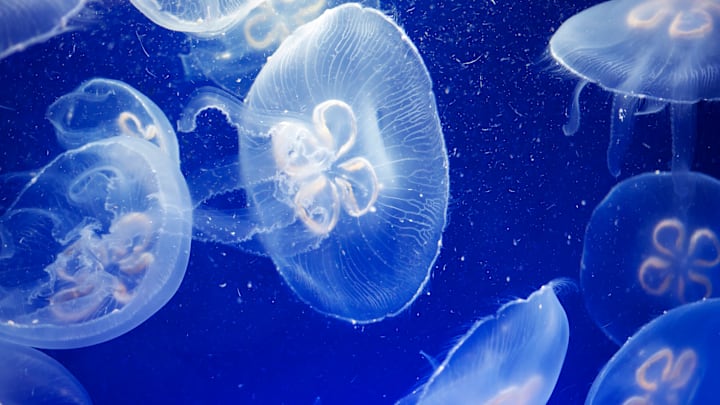The sting of a jellyfish comes from specialized cells in the surface of its tentacles, known as cnidocytes. Each small, bulb-shaped cell holds a nematocyst, a barbed, threadlike tube that is filled with venom. On the outside of each cell is a tiny hair, referred to as a cnicocil. When this “hair trigger” is disturbed, the cell’s toxic harpoon explodes from its capsule and into the skin of the jellyfish’s prey, or an unlucky swimmer.
The amount and type of venom, as well as the effect that it causes, depends on the type of jellyfish, the number of nematocysts involved, and the area and thickness of the skin they strike. Whatever the variables, a jellyfish sting is never exactly pleasant.
What Happens When Urine Is Used To Treat a Jellyfish Sting?
Often, after a human gets stung, there’s a tentacle or two that gets ripped off and left behind on their skin. The first step to treating a jellyfish sting is removing the tentacles without triggering any unfired nematocysts and making things worse.
Pressure triggers the cells, so you can’t just pick them off (whoever is doing the picking is just going to get stung on the fingers, too). Certain chemical changes, like throwing off the salt balance between the outside and inside of the cell, can also can also cause the stingers to fire.
This is why urine is often no good. Sure, urine contains salts, but it’s just too variable. Concentrated urine might do the trick, and there are anecdotal reports from some sting victims that it helps relieve a bit of the pain. But if the person doing the peeing is well-hydrated, the urine will be too diluted with water and make the stingers fire. What’s more, while urine itself is sterile, it has to pass through the germ-laden urethra to get out, which could lead to a bacterial infection for the sting wound.
The Right Way to Treat a Jellyfish Sting
So, if Friends lied to us after all and peeing on a jellyfish sting runs the risk of making matters worse, what should you use to clean and treat the wound?
Vinegar is usually the way to go—just the plain white stuff with 5 percent acetic acid. It neutralizes unfired nematocysts so they can’t sting anymore, and some research has shown it to be one of the better post-sting rinses, especially when combined with the topical anaesthetic lidocaine.
When the one-two punch of vinegar and lidocaine isn’t available (most folks don’t usually bring vinegar to the beach), then saltwater can also be useful for rinsing away the remaining nematocysts. Once the stinging cells are deactivated, the stuck bits of tentacle can be picked off or scraped away with a credit card.
A word of caution, though: vinegar might not be the best home treatment for jellyfish stings, depending on the one that stung you. Acetic acid can actually have the opposite effect on stings from the jellyfish lookalikes in the genus Physalia, like the Portuguese man o’ war. If you’re not sure what stung you, your best bet is to just stick with saltwater and seek help from a lifeguard or medical professional as soon as you can.
Have you got a Big Question you'd like us to answer? If so, let us know by emailing bigquestions@mentalfloss.com.
Read More Big Questions:
A version of this article was originally published in 2012 and has been updated for 2025.
